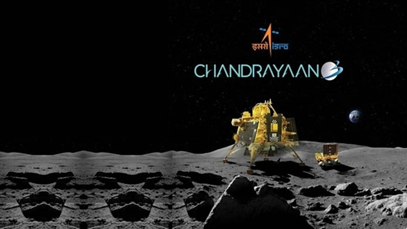In a remarkable achievement, Chandrayaan-3 has triumphantly touched down on the lunar terrain, ushering India into a select cohort of nations that have achieved the feat of sending a spacecraft to the Moon. This milestone cements India's position alongside the former Soviet Union, the United States, and China – the only countries to achieve soft landings on the Moon and recover soil and rock samples from its enigmatic surface.
Prime Minister Narendra Modi hailed this triumph as a significant step, asserting that India's presence on the Moon heralds the advancement of the nation into a developed state. With this victorious lunar landing, India claims the distinction of being the fourth country to master the complex technology of a gentle touchdown on the lunar landscape, joining the ranks of the United States, China, and the erstwhile Soviet Union. Nevertheless, no country has ever managed to deploy a rover on the challenging South Pole region, which scientists believe conceals crucial reservoirs of frozen water and valuable resources.
The Trailblazers: Lunar Expeditions of the Past
The forerunner missions of these nations encountered various degrees of success. The then Soviet Union accomplished a lunar impact on its sixth space mission, with Luna-2 crashing onto the Moon's surface on September 14, 1959 – marking the first instance of a human-made object striking another celestial body. Although this was a hard landing, the Soviet Union achieved a soft landing seven years later in 1966.
Similarly, the National Aeronautics and Space Administration (NASA) of the United States achieved its lunar conquest on July 31, 1964, following 13 unsuccessful attempts at crash landings. The pivotal moment arrived with NASA's Ranger 7, which transmitted 4,316 images before its final descent onto the lunar terrain. The United States achieved its soft landing a few months after Russia, in 1966. To date, the U.S. boasts the highest count of soft landings on the Moon – a total of 11.
China's pursuit of lunar exploration began with the Chang'e Project, initiating orbiter missions that meticulously mapped the lunar surface to pinpoint potential sites for gentle landings. Notably, the Chang'e 3 and 4 missions accomplished soft landings on December 2, 2013, and December 7, 2018, respectively. These missions also deployed rovers to navigate the lunar expanse. The Chang'e 5 mission, launched on November 23, 2020, successfully collected two kilograms of lunar soil from the Mons Rumker volcanic formation on December 1, 2020, and safely returned to Earth on December 16 of the same year.
India's Odyssey to Lunar Accomplishment
India's odyssey in lunar exploration commenced with the launch of Chandrayaan 1 on October 22, 2008. The spacecraft assumed a circular orbit around the Moon at an altitude of 100 km, circling the Moon approximately 3,400 times. During its operational span of two years, the orbiter conducted comprehensive chemical, mineralogical, and photo-geologic mapping of the lunar surface. Regrettably, communication with the spacecraft was severed on August 29, 2009, leading to the untimely end of the mission.
A decade later, on July 22, 2019, Chandrayaan-2 embarked on its voyage, featuring an orbiter, lander, and rover. The mission's objectives encompassed scientific investigations through payloads aboard the orbiter and a technological demonstration of gentle landing and roving on the Moon's terrain. However, an unforeseen software malfunction led to the spacecraft crash-landing on September 6, 2019, thwarting its objectives.
India's triumphant touchdown with Chandrayaan-3 heralds a new era of lunar exploration, showcasing the nation's persistence and technological prowess in the realm of space exploration.






